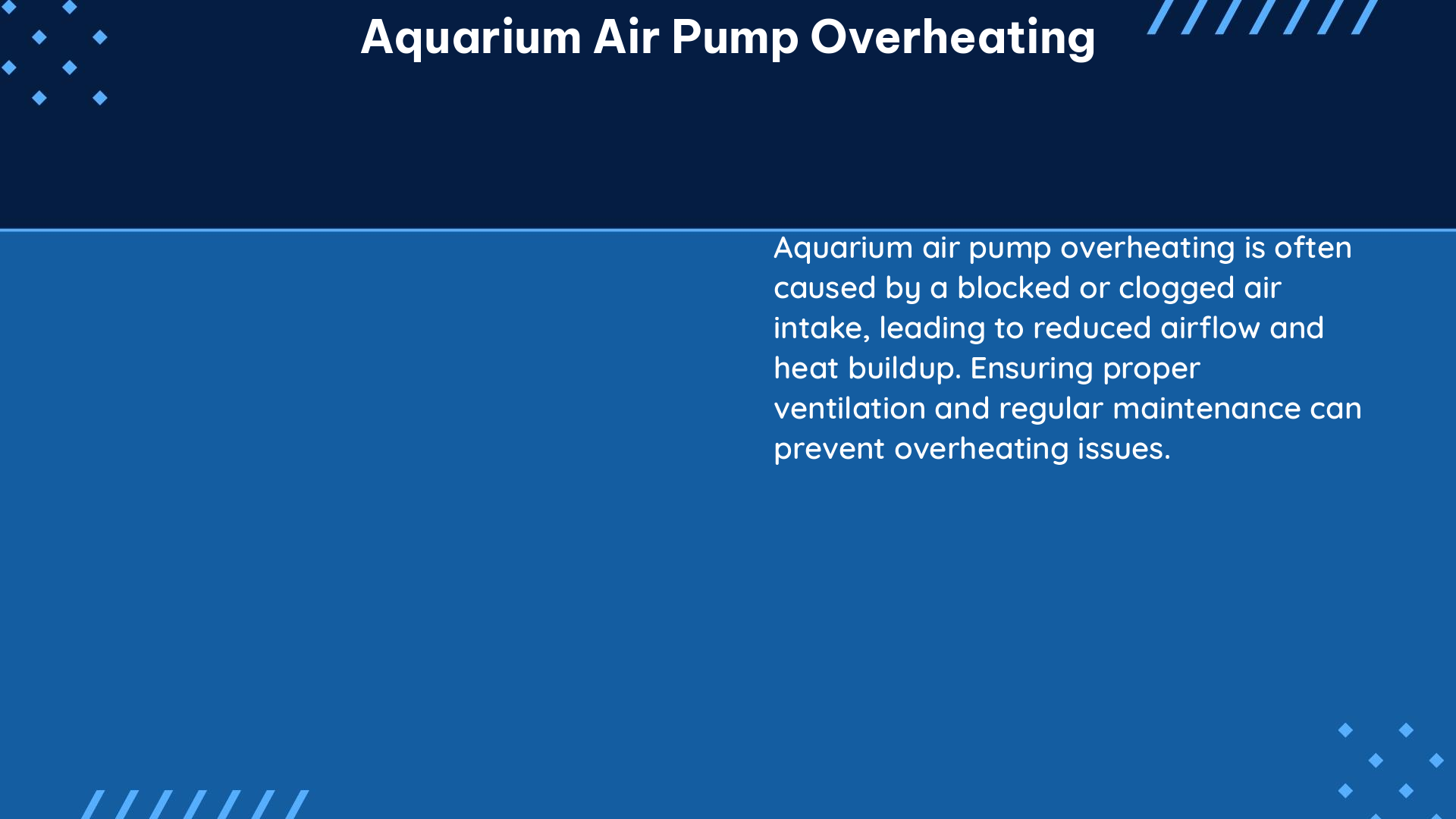Aquarium air pumps are essential components in maintaining a healthy and thriving aquatic ecosystem. However, these devices can be susceptible to overheating, which can lead to reduced performance, decreased efficiency, and even complete failure. In this comprehensive guide, we will delve into the measurable data, technical specifications, and DIY solutions to address the issue of aquarium air pump overheating.
Measurable Data on Aquarium Air Pump Overheating
Temperature Rise
One of the primary indicators of air pump overheating is a significant increase in water temperature. In a Reddit post, a user reported an 8°C (14.4°F) increase in water temperature after operating a 924 gallons per hour (gph) commercial air pump for a day. This substantial temperature rise highlights the potential for the air pump to transfer heat to the aquarium environment, which can have detrimental effects on the aquatic inhabitants.
Touch Test
A simple yet effective way to assess the potential for air pump overheating is the touch test. As a general rule of thumb, an air pump should not feel excessively warm or hot to the touch. If the device feels uncomfortably warm or even hot, it may be an indication of an overheating issue that requires further investigation and troubleshooting.
Technical Specifications of Aquarium Air Pump Overheating

Air Pressure and Outlets
In an Aquarium Forum post, a user noted that the air pressure from their air pump seemed low, which could be a sign of a problem with the pump or its settings. Reducing the number of outlets in use may help alleviate overheating issues, as a pump working harder to push air through closed outlets can generate more heat.
Reservoir Temperature
Another user observation from the Planted Tank Forum highlighted the rise in reservoir temperature, suggesting that the air pump was transferring heat to the water. This emphasizes the importance of monitoring water temperature and ensuring adequate cooling for the air pump to prevent overheating and its potential consequences.
DIY Solutions for Aquarium Air Pump Overheating
Regulate Airflow
One of the first steps in addressing air pump overheating is to adjust the pump’s settings or the number of outlets in use. By finding the right balance between adequate airflow and reduced heat generation, you can help mitigate the overheating issue.
Proper Ventilation
Ensuring proper ventilation around the air pump is crucial. Place the pump in a well-ventilated area to allow for efficient heat dissipation. Avoid enclosing the pump in tight spaces or covering it with objects that could obstruct airflow and contribute to overheating.
Regular Maintenance
Regularly cleaning the air pump can help prevent debris or buildup from hindering its performance and contributing to overheating. Keeping the pump clean and well-maintained can help maintain optimal efficiency and reduce the risk of overheating.
Cooling Solutions
Consider implementing additional cooling solutions to help dissipate the heat generated by the air pump. This can include using a small fan to blow air across the device or placing it on a heat-resistant pad to improve heat transfer and prevent overheating.
References
- Air pump overheating : r/Aquariums – Reddit
- Water Pump OverHeating | Aquarium Forum
- Thread: Air pump overheating? – Koiphen.com
- Air Pump running hot. Any ideas? – THCFarmer
- Pump overheating tank? | The Planted Tank Forum
By understanding the measurable data, technical specifications, and implementing the DIY solutions outlined in this guide, you can effectively address and prevent aquarium air pump overheating, ensuring the optimal performance and longevity of your aquarium’s air circulation system.
